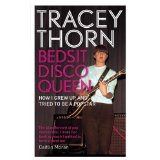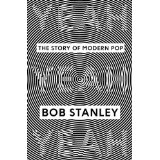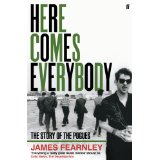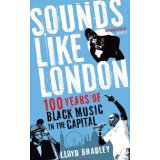So, another week in the music business and the hot topic is copyright again; that’s surprised everyone hasn’t it? Apple announces its new streaming service and a great introductory three month deal which it proposes to fund by not paying any royalties to artists. Predictably enough the Anne Robinson of digital rights management rides to the rescue. After taking on Spotify last year, Taylor Swift took aim at Apple this time with an open letter which has forced Apple to rethink its strategy of giving away other people’s earnings. Predictably again, it sparked off an online debate about hypocrisy when a photographer sent Ms Swift an open letter about photographic rights. It’s amazing how quickly these ‘debates’ descend into playground name-calling and tribalism; have a look for yourself but it’s not for the faint-hearted. Anyway, it’s all happy now because Apple has backed down and the artists will be paid.
While all that was going on centre-stage, you could easily miss another bit of copyright news being made which wasn’t attracting the attention of the popular and powerful Ms Swift. Various British music industry bodies, Musicians Union (MU), UK Music, and British Academy of Songwriters, Composers and Authors (BASCA) if you must know, have combined to request a judicial review into the creation of Section 28B of the Copyright, Designs and Patents Act 1988. Now that’s a real headline grabber isn’t it? In really simple terms, the government has inserted a clause (Section 28B) in the legislation, to take effect from June 2015, which made copying of CDs legal for personal, private use although you probably thought it was fine to do that anyway. The judicial process is far from over, but Mr Justice Green has upheld the review application.
On the face of it, these industry bodies are using the same principle as Taylor Swift, claiming that artists are losing royalties and that the industry shouldn’t allow this to happen, which is very noble of them, but if that’s true, then why take twenty years to decide that we shouldn’t be allowed to rip our CDs so we can listen to them on the train or create playlists for parties. Unless it isn’t just about that.
One of the remedies suggested by the music industry is a levy on recordable media (CDs, hard drives and so on), which has been tried in other European states. So call me an old cynic if you like, but surely their real concern is that the blank media industry is reaping the benefits of digital copying and the music industry isn’t getting its share. The UK proposal is a levy on blank media collected by an agency and shared out with artists. You don’t need a PhD to see that there’s absolutely no link between which songs are copied and the money coming in, so a huge and unnecessary bureaucracy has to be created to work out the collection and distribution process (supervised by the UK music biz). Anyone think that’s fair? And there’s an assumption that all digital media sold is being used for copying music; you can call me paranoid, but I have several hard drives and countless DVD-Rs full of original photos and there’s no way I’m paying duty on those so some chancer can copy Celine Dion’s Greatest Hits to flog in the market at Elephant & Castle. It’s like the whole class having to stay behind because the teacher doesn’t have the bottle to take on the bully.
So, how about an extra charge on every CD to account for a certain amount of ripping and copying? Well, one side of the argument is that no-one wants to pay for something that they can’t play on a device they use on the move, while, on the other hand, why should you pay extra if you have no intention of copying a CD? You could apply a charge when a CD is copied (or format-shifted) but who’s going to be happy about buying a CD from the artist’s website or at a gig to maximize the artist’s cut only to find that you then have to pay someone else for the privilege of listening to it on your media player. It’s equitable, but music buyers are going to be reminded of the cost every time they rip a CD (which is why MU, BASCA and UK Music don’t like it; they don’t look like the bad guys if you pay extra for a hard drive, rather than your music).
If the CD format is dying, and I’ve already bought a black tie, is this an attempt to accelerate its demise? If you’re buying a physical copy mainly to listen to it on a mobile device, why not just get rid of the middleman and buy it in a format you can load on to your media player? If there isn’t a physical copy you can eliminate the costs of artwork, packaging, storage and distribution and companies don’t need to worry about size of production runs when they sell on demand. If your album’s aimed at that hardcore who still want a physical package, then you can sell it on vinyl at a premium price and you can even throw in a digital download code, because it won’t increase your costs.
Let’s be completely honest about this; the music industry is going for the soft target again. Rather than try to take on organised counterfeiters, they’re trying to recoup their perceived losses by hitting, and alienating, music fans who have no objection to paying for a product. The business was quite happy to reap the benefits of digitisation in the production and distribution process but doesn’t like to see the customers using the same technology to shift formats for the user’s convenience. It certainly puts the eighties ‘Home taping is killing music’ campaign into perspective.
As always, the UK music establishment is frantically trying bolt the door when the stables have been empty for years while. Perhaps it’s one last cynical attempt to cash in on the punters who realise that they need to copy their CDs before the indestructible format vanishes and, ultimately, so do the CD players. So, if you’re one of those strange people that still believes in paying for music, you’ll have two choices: cheap and cheerful download or premium price (currently about twice the price of a CD) vinyl copy. As for streaming, well no artist I know is happy with their level of reward from Spotify, but the establishment’s comfortable with a lower percentage of an increasing volume for very little investment and the big players are now buying in to streaming services for their mass market activities.
Are there any alternatives to accepting the lower sound quality of MP3s and the high price of vinyl (and something to play it on if you didn’t save it from the first time round)? You could try uncompressed audio; Neil Young’s been touting his Pono format for a few years (other formats are available) and better internet bandwidth and bigger hard drives are making that more attractive now. Sound purists love it, but it’s a digital format and there’s no tactile packaging, photos or sleeve notes, and you could see it as just another way to resell back catalogue (again) in another format. Or maybe Cooking Vinyl MD, Martin Goldschmidt was right five years ago when he predicted the CD ‘will actually become a minority (non-mass market) format in the way that vinyl has’. Wouldn’t that be ironic?
Ok, call me obsessive if you like but as well as listening to a lot of albums and going to as many gigs as I can, I also read the odd book or two about music and popular culture and many of those are worth sharing with anyone who checks out MusicRiot regularly. This list was difficult to pin down to five from the start, but it became even more difficult on Christmas Day when I was given a copy of the Donald Fagen memoir/tour diary/article compilation, “Eminent Hipsters”. So I guess that’s a pretty good place to start.
“Eminent Hipsters” – Donald Fagen
 Where do I start with Donald Fagen? With Walter Becker, he was half of one of my favourite 70s bands, Steely Dan and then went on to release the classic solo album, “The Nightfly” in 1982, followed (not too closely) by “The Kamakiriad” in 1993. You’ve probably guessed by now, I’m a bit of a fan. “Eminent Hipsters” is partly an explanation, through a series of articles, of the factors which influenced the Steely Dan sound (cool jazz, cop dramas and wise-ass comedians) and the Donald Fagen solo sound (science fiction and mid-century paranoia). If you love the music, you’ll be fascinated by these observations about its roots. The second part of this slim volume is devoted to Fagen’s diary from the 2012 “Dukes of September Rhythm Revue” tour which is, by turn, snarky, moving, insightful and downright hilarious.
Where do I start with Donald Fagen? With Walter Becker, he was half of one of my favourite 70s bands, Steely Dan and then went on to release the classic solo album, “The Nightfly” in 1982, followed (not too closely) by “The Kamakiriad” in 1993. You’ve probably guessed by now, I’m a bit of a fan. “Eminent Hipsters” is partly an explanation, through a series of articles, of the factors which influenced the Steely Dan sound (cool jazz, cop dramas and wise-ass comedians) and the Donald Fagen solo sound (science fiction and mid-century paranoia). If you love the music, you’ll be fascinated by these observations about its roots. The second part of this slim volume is devoted to Fagen’s diary from the 2012 “Dukes of September Rhythm Revue” tour which is, by turn, snarky, moving, insightful and downright hilarious.
Donald Fagen writes in an instantly-identifiable style betraying a debt to Raymond Chandler and Dashiell Hammett, which sneaks in when describing Audrey Hepburn in “Breakfast at Tiffany’s” as getting :”out of that cab on Fifth Avenue in a black dress and pearls in the early morning, I wanted to sip her through a straw”. It’s beautifully written and you can get through it in a few hours; it takes 170 pages to deliver a message that most rock biographies take at least five times as long to get over.
“Bedsit Disco Queen: How I Grew Up and Tried to be a Pop Star” – Tracey Thorn
 If Donald Fagen’s prose style is easily identifiable, then Tracey Thorn’s is even more so. I’m always impressed when musicians get this right (Peter Hook and Luke Haines also do it particularly well) and, from the first paragraph, this is pitch-perfect ‘Popstar Trace’. The book takes us from the Marine Girls beginnings through the EBTG false starts and eventual success to the beautiful Massive Attack vocals (I’m biased, but you should read about the origins of the modern classic, “Protection” here) and the worldwide Todd Terry-remixed success of “Missing”.
If Donald Fagen’s prose style is easily identifiable, then Tracey Thorn’s is even more so. I’m always impressed when musicians get this right (Peter Hook and Luke Haines also do it particularly well) and, from the first paragraph, this is pitch-perfect ‘Popstar Trace’. The book takes us from the Marine Girls beginnings through the EBTG false starts and eventual success to the beautiful Massive Attack vocals (I’m biased, but you should read about the origins of the modern classic, “Protection” here) and the worldwide Todd Terry-remixed success of “Missing”.
Tracey’s style is perfectly self-deprecatory; you never feel a hint of false modesty and the mentions of famous musicians are always very matter-of-fact, including the story about waiting to pick the kids up from school and being shouted at by George Michael from a Range Rover. This is a wonderful memoir from a genuine pop star.
“Yeah, Yeah, Yeah: The Story of Modern Pop” – Bob Stanley
 It’s obvious from the outset that this is actually a companion piece to the classic 2012 St Etienne album, “Words and Music”. The album was a voyage through the history of British pop music and the book is an extended verbal remix of the ground covered by the album. What’s equally obvious is that Bob Stanley is both an enthusiast and an insider, which gives him a unique perspective on his subject. He aims to show the links between different styles using not just the music, but also sociological and technological developments. If you’re interested in the history of pop music and you’ve done a bit of research, you might disagree with some of his pronouncements, but it’s a big book and you’ll probably agree with ninety per cent of them.
It’s obvious from the outset that this is actually a companion piece to the classic 2012 St Etienne album, “Words and Music”. The album was a voyage through the history of British pop music and the book is an extended verbal remix of the ground covered by the album. What’s equally obvious is that Bob Stanley is both an enthusiast and an insider, which gives him a unique perspective on his subject. He aims to show the links between different styles using not just the music, but also sociological and technological developments. If you’re interested in the history of pop music and you’ve done a bit of research, you might disagree with some of his pronouncements, but it’s a big book and you’ll probably agree with ninety per cent of them.
The book takes the first NME chart in 1952 as its starting point (which is logical and not controversial) and the end of vinyl as a chart force in 1993 as its end point, when the first Number One singles not to have been released as a 7” single or (a few months later) on vinyl at all topped the charts (if you want to know what they are, you can buy the book ). It’s a slightly more controversial choice but still with a logical basis for someone who grew up in the age of vinyl. The book has an authority derived from Bob Stanley’s experience as a writer and member of a very successful pop group but never slips into the socio-cultural academic approach of, for example, Simon Reynolds. The theme that underpins everything else in this book is that Bob Stanley is still a fan who wants you to come round and listen to his records, and that makes this an unmissable book.
“Here Comes Everybody: The Story of the Pogues” – James Fearnley
 I’ve always been a fan of the “inside story” biography, particularly those that aren’t ghost-written attempts at cultural revisionism. This memoir by James Fearnley is, at times, brutally and crushingly honest about members of The Pogues and he doesn’t spare himself either. The book begins by setting the scene with Shane MacGowan’s departure from the band in 1991 before moving back to Fearnley’s initial meeting with MacGowan at an audition for The Nips in 1980.
I’ve always been a fan of the “inside story” biography, particularly those that aren’t ghost-written attempts at cultural revisionism. This memoir by James Fearnley is, at times, brutally and crushingly honest about members of The Pogues and he doesn’t spare himself either. The book begins by setting the scene with Shane MacGowan’s departure from the band in 1991 before moving back to Fearnley’s initial meeting with MacGowan at an audition for The Nips in 1980.
The book is a (mainly) unsentimental account of the rise and fall of The Pogues from the viewpoint of someone close enough to see everything but with enough distance to retain some objectivity. From the chaotic managerless beginnings through the unpopular but successful stewardship of Frank Murray, the story is underpinned at all times by MacGowan’s unpredictability and seemingly random self-destructive urges. James Fearnley tries very hard to balance the singer’s inexcusable behaviour against the genius of the songs, but it’s up to you if you buy that line; I certainly don’t. My only criticism is that James Fearnley spends a little too much time trying to emphasise the fact that he’s a writer and occasionally introduces unnecessarily florid prose to prove it; putting that aside, it’s still a winner.
“Sounds like London: 100 Years of Black Music in the Capital” – Lloyd Bradley
 Bear with me for a minute here; this will all make sense presently. Earlier this year I read “How Soon is Now?: The Madmen and the Mavericks who made Independent Music 1975-2005” by Richard King. It’s a very good book and a must for geeks like us, but it attracted a lot of criticism because it didn’t touch on the black music scene. Richard King was even accused, pathetically, of racism in some quarters; you might even have read about it. Personally, I prefer to read authors who write about subjects they understand and that really inspire them; if Richard King didn’t have the expertise, contacts or inspiration to write about the black music scene, then Lloyd Bradley certainly did.
Bear with me for a minute here; this will all make sense presently. Earlier this year I read “How Soon is Now?: The Madmen and the Mavericks who made Independent Music 1975-2005” by Richard King. It’s a very good book and a must for geeks like us, but it attracted a lot of criticism because it didn’t touch on the black music scene. Richard King was even accused, pathetically, of racism in some quarters; you might even have read about it. Personally, I prefer to read authors who write about subjects they understand and that really inspire them; if Richard King didn’t have the expertise, contacts or inspiration to write about the black music scene, then Lloyd Bradley certainly did.
The title is a little misleading; there’s very little about pre-1950s black music, and it also deals with regional English offshoots from the London scene but those aren’t criticisms, just observations. The reason for the comparison with Richard King’s book is that one of Lloyd Bradley’s recurring themes is that black British music has always developed and prospered healthily out of the mainstream when produced and distributed independently.
Once the book reaches the point where Lloyd Bradley can introduce interviews with the players who made black British music happen (the steel pan players, the jazzers, the sound system pioneers, the Britfunk players and the mainstream crossovers Eddy Grant, Janet Kay, Jazzie B and the rest), the narrative really takes off with stories of the sound systems and records being sold out of the back of a car and distributed around the country in the same way. Lloyd Bradley takes us through calypso, ska, reggae, lovers rock, dub, britfunk, 98 bpm, trip hop, jungle, d’n’b, UK garage, dubstep and grime along with a host of short-lived one-way streets with an unassuming and easy authority that is very seductive. If you want an introduction to black British music, this is the book for you.
OK, spoilers alert; I’ve relented. I’ll tell you that the chart-toppers Bob Stanley refers to in 1993 and 1995 respectively are Culture Beat’s “Mr Vain” and Celine Dion’s “Think Twice”, but you should still read the book. Actually you should read all of these books.


